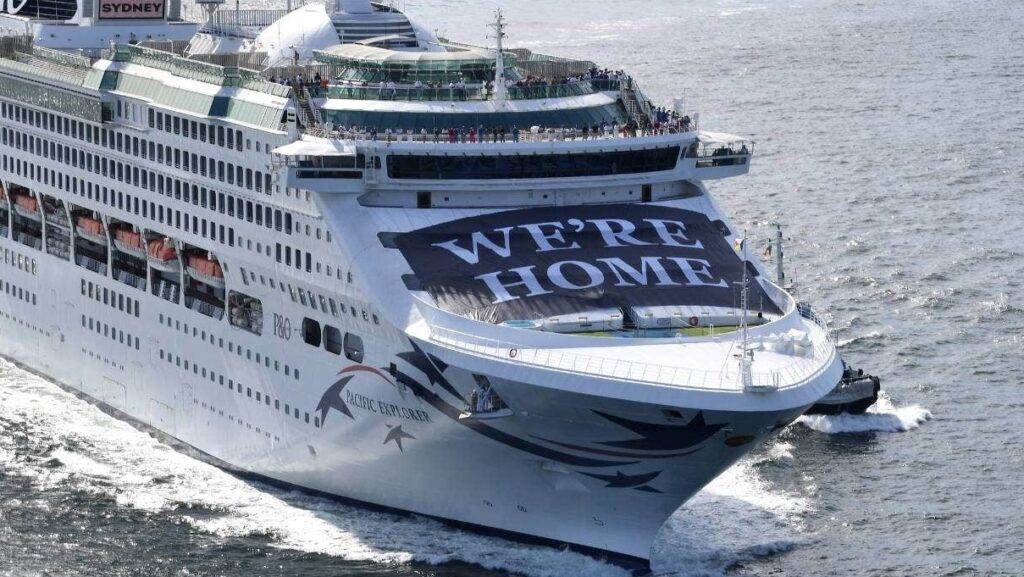Most travellers know the benefits of having travel insurance for a trip abroad, where a medical emergency can turn into a financial nightmare.
Domestic travel insurance is also an option for those holidaying at home. Like travel insurance for international travel, it can cover disruptions, delays and loss of belongings. The main difference is that there is less focus on medical costs, as you will have access to the public health system if you get into any kind of trouble.
But there is one type of holiday where insurance is a little more complicated – domestic cruises.
Kiwis are keen on cruising close to home: according to the International Association of Cruise Lines, 21% took a cruise on local waters in 2019.
Domestic cruises include itineraries such as Australian cruise line P&O’s Kiwi Explorer, which begins and ends in Auckland with stops in Christchurch, Dunedin, Stewart Island, Fjordland and Picton en route. This nine-day cruise is due to start in November 2023.
But Kiwis wishing to book such a cruise may be surprised to learn that the cruise company offers to buy international travel insurance.
“Regardless of whether the trip only includes domestic ports, we strongly recommend that guests obtain insurance for international travel,” said a spokesperson for Carnival Australia, parent company of P&O Cruises.
So, why is this the case? It’s all about maritime boundaries.
“If you’re planning a domestic cruise in New Zealand, it’s likely that you will enter international waters,” said David Wallace, sales director at Allianz Partners New Zealand.
“That’s why you need an international insurance policy.”
The main problem with being offshore comes down to who will pay for your medical treatment if you need it.
When you’re actually onshore in New Zealand, there’s no question,” explained Cherryl Brown, general manager of Cruise World.
“If someone is doing a shore excursion [in New Zealand] and breaks a leg, they can go to the hospital and get treatment,” she said.
“It’s more about whether they need treatment on board the ship.”
All large cruise ships have their own medical facilities on board, including at least one doctor. Fees can vary widely, and if the worst happens and you need to be airlifted off the ship and taken to the nearest hospital, it can be very expensive.
So even if you’re a Kiwi travelling in New Zealand, if you don’t have insurance – or you don’t have the right insurance – you’ll end up having to pay the bills.
New Zealand Insurance Board spokesman Christian Judge said that when it comes to policies for domestic cruises, some insurers offer extensions to domestic policies that will cover cruises, while others offer policies for international cruises that will also apply around New Zealand.
“Good cover will include coverage for medical transfer from ship to shore in certain circumstances,” added Judge.
House of Travel commercial product manager Paula Watson said their customers were offered a cruise package with Allianz-insured insurance, which as well as medical and evacuation coverage included other benefits specific to cruise holidays, such as stateroom insurance and unused excursions.
A 1Cover spokesperson said those embarking on a cruise in New Zealand would need to purchase an inland policy and add a cruise package that would cover medical evacuation from the ship to shore, as well as required medical expenses on board the cruise.
In the event of injuries sustained aboard the cruise ship, ACC support will be available once passengers have returned to shore.
Medical treatment on board a cruise ship can only be covered by the ACC if the treatment provider was registered in New Zealand and the treatment was carried out in New Zealand waters, so this is probably not an option if you are going on a cruise from an international cruise company.
“We encourage everyone who is travelling to have comprehensive travel insurance as there are limits to ACC coverage,” said acting ACC deputy general manager for service delivery Phil Riley.

